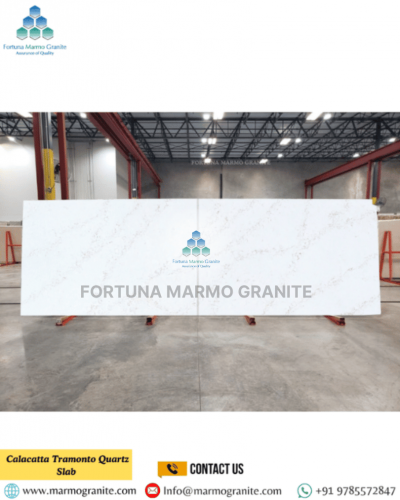How to Transport Quartz Slabs Safely: Expert Tips for Damage-Free Delivery
How to Transport Quartz Slabs Transporting quartz slabs can be tricky, even for experienced professionals. While quartz is durable once installed, it is surprisingly fragile during transit. A small mistake can lead to chips, cracks, or complete breakage, turning a successful project into a costly problem.
Quartz slabs are heavy and rigid, with little tolerance for bending or impact. Proper handling from the factory to the site is essential. Start by inspecting each slab for flaws and applying protective films. Use sturdy A-frames made of reinforced wood or metal. Place slabs upright, evenly spaced, and secure them with non-abrasive straps.
Avoid stacking slabs flat, as this can cause stress fractures. Edge cushioning, clear labeling, and avoiding transport during extreme weather further protect the material. Trained handlers, well-maintained vehicles, and reliable shipping partners also make a big difference. By following these steps, you can ensure your quartz slabs arrive safely and in perfect condition.


Understanding the Vulnerability of Quartz Slabs
Before learning how to transport quartz slabs safely, it's important to understand why they require extra care. Quartz is very hard (7 on the Mohs scale), but this hardness also makes it brittle under certain conditions. Unlike flexible materials, quartz slabs have a high modulus of elasticity—they don't bend easily, and when they do, they can break.
Key Risks to Watch For:
Impact: A sharp hit on edges or corners can cause chips or cracks.
Flexing and Bending: Lifting or transporting without proper support may flex the slab beyond its limits, leading to breakage.
Vibration: Long trips over uneven roads can loosen fastenings or create micro-cracks that worsen over time.
Point Pressure: Concentrated pressure, such as a corner pressing against a hard surface, can crack the slab.
Thermal Shock: Sudden temperature changes, though rare during transport, can stress the slab and cause damage.
The Foundation: Pre-Transportation Checklist
- Slab Inspection: Your First Line of Defense
Before anything else, thoroughly inspect each quartz slab for existing defects. This serves two crucial purposes:
- Documentation: It protects you from liability if damage occurs that was pre-existing. Take clear photographs or videos of any chips, cracks, or imperfections.
- Damage Prevention: It allows you to address any minor issues before they worsen during transit. For instance, a small existing chip might require extra padding in that area.
- Proper Cleaning: A Surprisingly Important Step
Clean the slab thoroughly, removing any dust, debris, or adhesive residue. Not only does this allow for a clear inspection, but it also prevents foreign particles from creating abrasive points against protective materials or causing slippage during handling.
Lifting and Loading: Precision is Paramount
- Choosing the Right Equipment: Safety First
A-Frames (Slab Racks): Crucial for transporting single or multiple slabs, A-frames provide stable vertical support and minimize flexing. Use a robust steel frame with a wide base for stability. Line all contact surfaces with rubber or another non-slip, non-abrasive material to protect the slabs.
Forklifts and Overhead Cranes: Necessary for heavy slabs. Make sure the lifting attachments, such as slab lifter clamps or vacuum lifters, are rated for the slab's weight and are in proper working condition.
Slab Clamps and Vacuum Lifters: Designed to securely grip the slab during handling. Regularly inspect pads for wear and tear and verify that suction or clamping force is sufficient for the slab's weight.
- Lifting Techniques: Smooth and Controlled
Always Lift Vertically: Always transport quartz slabs in a vertical or near-vertical position using an A-frame or similar support. Laying slabs flat, especially large ones, can create bending stresses that may cause cracks.
Use Proper Lifting Points: When using slab clamps, place them symmetrically and securely. For vacuum lifters, ensure the pad makes full contact with a clean, dry slab surface.
Move Slowly and Steadily: Avoid sudden jerks or rapid movements. Smooth, controlled motions reduce stress on the slab.
Ensure Adequate Manpower: Quartz slabs are heavy. For manual handling of smaller slabs, have enough trained personnel and ensure everyone knows their role during the lift.
On the Road: The Journey to Damage-Free Delivery
Choosing the Right Vehicle: Stability is Key
- Flatbed Truck/Trailer: For large quantities or oversized slabs, a flatbed truck or trailer equipped with tie-down points and ample space for A-frames is ideal.
- Enclosed Trailer/Van: For smaller quantities or to protect from weather, an enclosed trailer or van can be used, provided it can accommodate the A-frame and secure it properly.
- Suspension Matters: Vehicles with air ride suspension offer a smoother journey, significantly reducing vibrations and impacts transmitted to the cargo. If air ride isn't available, compensate with extra padding and slower speeds.
Strategic Loading and Securing the A-Frame
- Center of Gravity: Position the A-frame(s) in the vehicle to maintain a balanced center of gravity. Avoid placing all the weight to one side.
- Secure the A-Frame: This is critical! Use multiple heavy-duty chains or straps to secure the A-frame itself to the truck's anchor points. Cross-strap for maximum stability. The A-frame must not be able to slide, tip, or shift in any direction.
- Padding Between Slabs (if multiple): If you have multiple slabs on one A-frame, place thin, non-abrasive padding (e.g., corrugated plastic sheets, foam, or felt) between them to prevent rubbing and impact damage from vibration.
- Void Filling: Eliminate any significant voids around the A-frame or individual slabs. Use dunnage bags, wooden bracing, or additional padding to prevent movement.
Driving Considerations: The Human Element
Even with the best preparation, the driver plays a pivotal role in damage prevention.
- Smooth Acceleration and Braking: Avoid sudden starts and stops. Gradual acceleration and controlled braking minimize forward and backward shifts.
- Gentle Cornering: Take corners slowly and wide, preventing centrifugal forces from pushing the slabs against the restraints.
- Awareness of Road Conditions: Anticipate bumps, potholes, and rough terrain. Slow down significantly before hitting them. If possible, choose routes with smoother roads.
- Regular Checks: For longer journeys, pull over periodically (safely!) to re-check all straps and tie-downs. Vibrations can cause them to loosen. Re-tighten as necessary.
- Weather Awareness: Protect slabs from rain, snow, or extreme temperatures. While quartz is durable, prolonged exposure to moisture during transport can lead to issues with packaging or even the material if not properly sealed.
Conclusion
Transporting quartz slabs safely requires meticulous attention, professional handling, and the right logistical strategy to prevent damage during transit. Although durable once installed, quartz can crack, chip, or break if moved improperly. In addition, Begin by selecting sturdy A-frames designed for stone slabs. Use thick padding and edge protectors to prevent impact damage, and secure the slabs firmly with heavy-duty straps without applying excess pressure. Consequently, Never stack slabs flat, as this increases the risk of breakage. Instead, position them vertically and space them evenly to distribute weight properly.
Moreover, Choosing trained handlers and experienced logistics partners is essential, as improper loading or unloading can compromise even the best-packaged shipment. Indian Granite Supplier At Fortuna Marmo Granite, we bring years of expertise in natural and engineered stone logistics, ensuring every quartz slab is packed with precision, protected using industry-approved methods, and delivered to our clients around the globe in flawless condition. Our dedicated team supervises the entire process—from warehouse to delivery site—providing peace of mind and a damage-free experience every time. With a strong commitment to quality, safety, and customer satisfaction, Fortuna Marmo Granite remains a trusted name in the global supply of premium quartz and natural stone surfaces.

